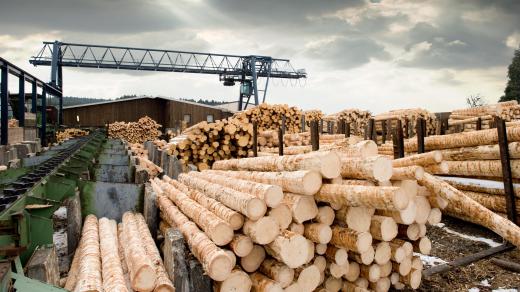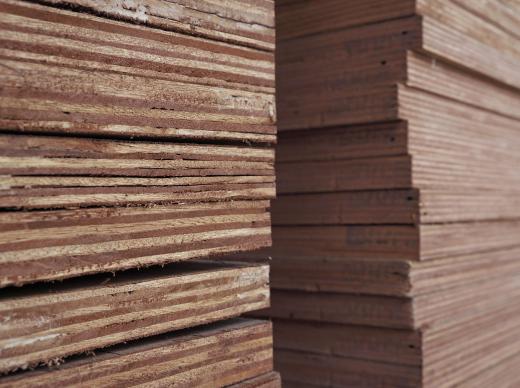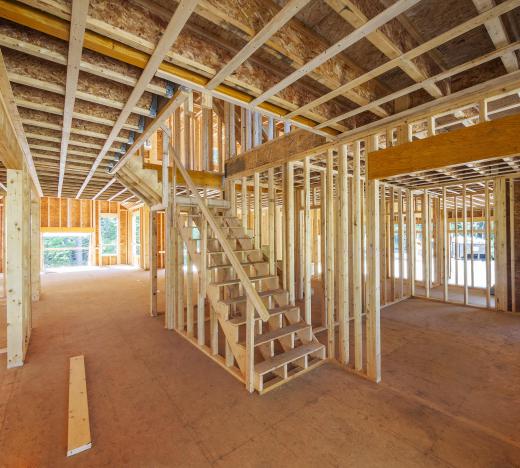A lumber yard is a commercial enterprise that stores and sells wood for construction and other purposes. Most of the lumber available in a lumber yard is pine dimensional lumber, used for framing houses and building walls, as well as different types of plywood and other sheet goods. The lumber available at most lumber yards has been surfaced flat and smooth, although some also sell rough-cut lumber. In addition to lumber, most lumber yards also sell a wide variety of tools and equipment for carpenters, contractors, and woodworkers.
Before it's delivered to the lumber yard for retail sale, lumber is processed in a sawmill to produce boards and planks of uniform size, strength and moisture content, suitable for immediate use. Most lumber sold in a lumber yard has been planed on at least one side or edge to produce a smooth, flat surface. Most lumber sold by lumber yards is destined for use in construction of residences and some commercial structures. This lumber is generally pine, a strong and inexpensive wood for construction, which is easily renewable.

Most lumber sold is dimensional lumber — that is, it's been cut at the sawmill to standard sizes such as the two-inch (5.08 cm) by four-inch (10.16 cm) stud, or 2x4, that's commonly used to frame a house. Other common sizes of dimensional lumber are 4x4 inches (10.16x10.16 cm), 2x6 inches (5.08x15.24 cm), 2x8 inches (5.08x20.32 cm) and 2x12 inches (5.08x30.48 cm). These are the dimensions to which the lumber was first cut in the sawmill before drying and surfacing; the actual dimensions of the lumber sold in a lumber yard can be up to 1/4 inch (6.35 mm) smaller per surface. Lumber will also be classified according to the number of edges and sides that have been planed smooth, or surfaced: “S1S1E” is a notation indicating that a board has been surfaced on one side and one edge; “S2S2E” means that both edges and both sides have been surfaced.

Lumber yard jobs can be dangerous. Even after being dried, lumber is heavy, and any quantity more than two or three boards must be moved with a cart, and large quantities are moved with pallet jacks or forklifts. In addition, even wood that's been surfaced often has splinters, so handling wood can pose hazards. Finally, most lumber yards will cut lumber and sheet goods like plywood to size for customers with stationary and hand power tools. Worker safety in lumber yards is a serious issue, and most American states forbid employment in lumber yards for those under age 18.

Most lumber yards cater to construction contractors and the bulk of their stock is pine, which is an inexpensive and strong material for framing houses and other structures. Many yards in the United States carry a small stock of hardwoods such as oak, maple, and cherry for use in such projects as cabinets, furniture and molding. Some, though, specialize in hardwoods, especially for flooring, and these hardwood lumber yards cater more to flooring contractors, carpenters, and woodworkers than construction contractors.
